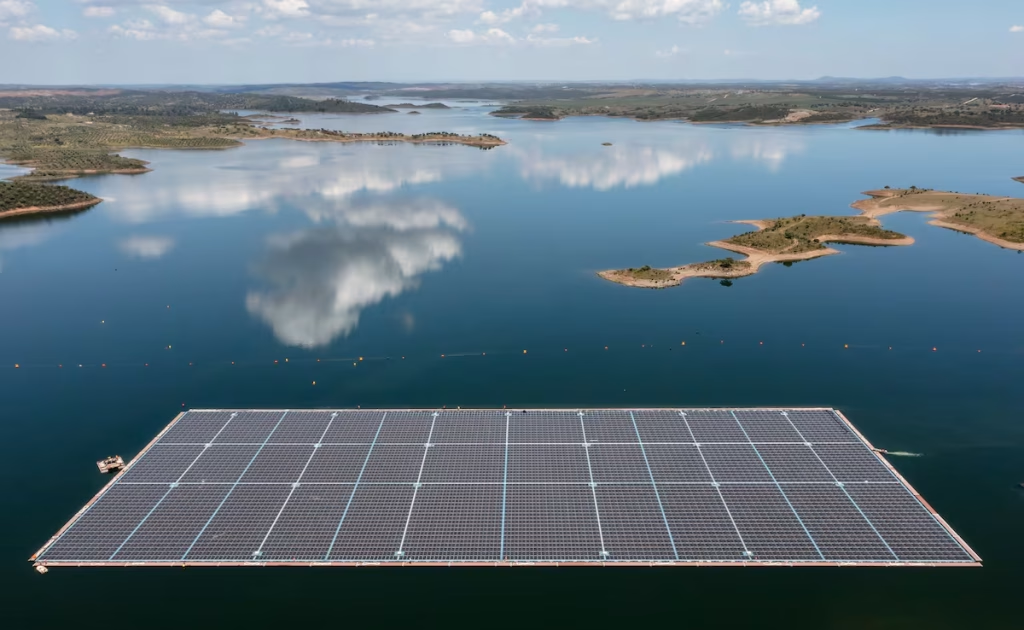They will allow increasing the capacity of renewable electricity generation, promoting the energy transition and decarbonization
These plants will reduce the evaporation of water masses and the presence of algae, and will produce more energy thanks to the cooling provided by the water and the reduction of dust.
The size of the facilities will range between 5% and 15% of the total surface, depending on the quality of the water.
The Council of Ministers, at the proposal of the Ministry for Ecological Transition and the Demographic Challenge (MITECO), approved this Tuesday the Royal Decree that regulates the requirements for the granting of permits for the installation of floating photovoltaic plants in reservoirs located in the public domain hydraulic, which may occupy between 5% and 15% of the total useful surface of said reservoirs. The hydrographic confederations may also promote public tenders to grant authorizations and concessions in state-owned reservoirs. The concessions will have a maximum duration of 25 years.
These types of installations are beneficial for both energy production and the environment: they produce more electricity than their equivalents on land, thanks to the effects of water cooling and dust reduction, and they improve the protection and potential of the masses of water, reducing its evaporation and algae blooms, thanks to the shade they provide.
AMPLITUDE DEPENDING ON WATER QUALITY
The royal decree conditions the solar installation on its compatibility with the corresponding Hydrological Plan, as well as with the needs of the exploitation of each reservoir, the pre-existing rights and uses, the environmental objectives of the water bodies and the environmental evaluation procedure. Furthermore, the extent of these facilities will be established depending on the trophic state of the reservoir in question: the worse the quality of its waters, the greater its coverage can be.
Thus, the maximum percentage of total surface area covered is limited to 5% in the case of non-eutrophic reservoirs, and to 15% in the case of eutrophic reservoirs or at risk of eutrophication, that is, when there is high biological productivity. although these limits may be reduced depending on the exploitation regime or pre-existing uses and rights, among other causes.

A floating photovoltaic installation, in the Alqueva reservoir (Portugal).EDP
The basin organization will ensure that technical studies and monitoring programs are provided for the state of the water masses receiving the facilities to evaluate the hydromorphological changes that may occur, as well as the associated chemical and biological changes, especially in cases where that the solar installation occupies more than 10% of the surface of the reservoir.
Photovoltaic plants will not be installed in lakes, lagoons or other bodies of water that are not considered highly modified or artificial, nor on those surfaces that, being highly modified or artificial, are affected by any environmental protection figure.
CONCESSIONS WITH A MAXIMUM DURATION OF 25 YEARS
Floating photovoltaic installations in the public hydraulic domain will be granted through temporary concessions with a maximum duration of 25 years, through a procedure that may be initiated at the request of a party or through a public tender call by the basin organization.
Once the rights of access and connection to the electrical network are available, and when the General Administration of the State is competent in hydraulic matters and energy matters, the concession of public hydraulic domain and prior administrative authorization may be processed and granted simultaneously. in accordance with a procedure that will regulate a ministerial order.
The owners of the photovoltaic installations will be subject to the fee for the use of assets in the public hydraulic domain and in the case of state-owned reservoirs, to the concession fee and the regulation fee.


